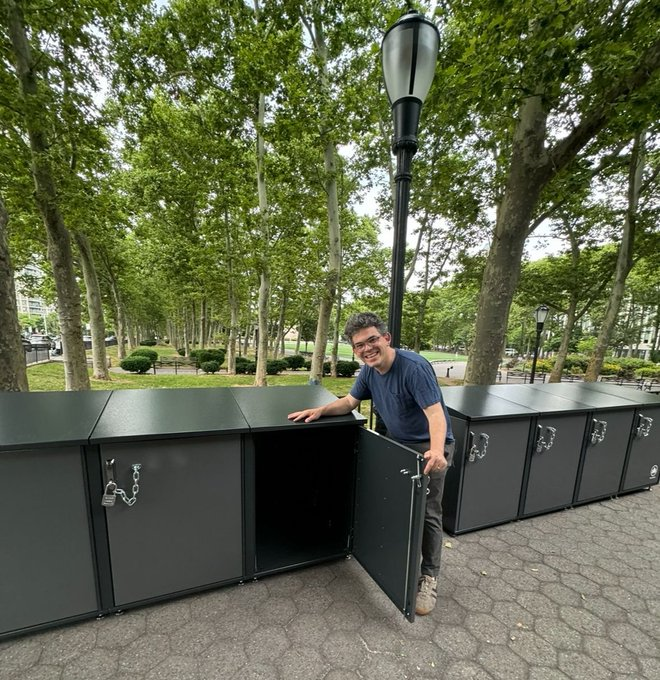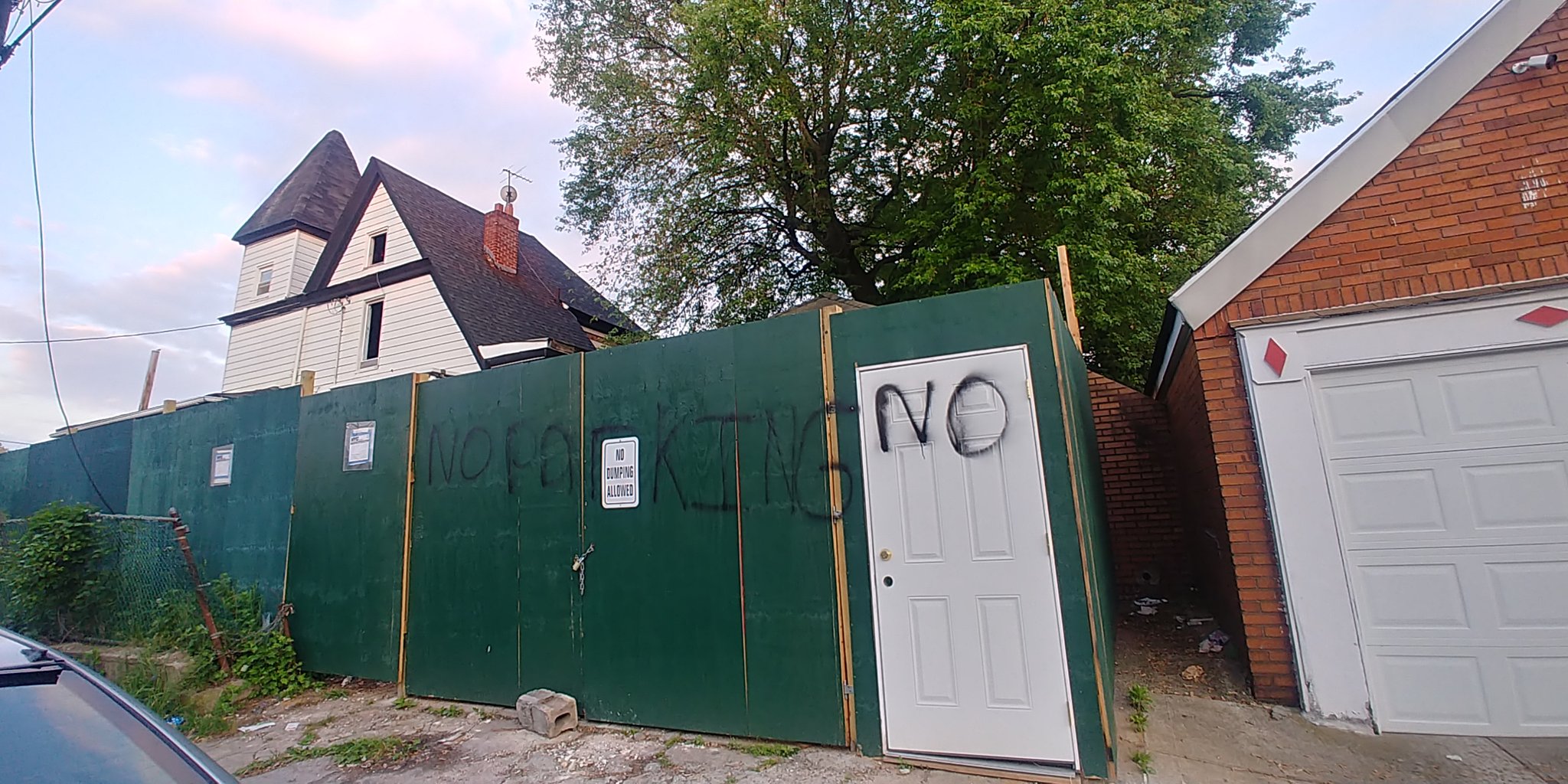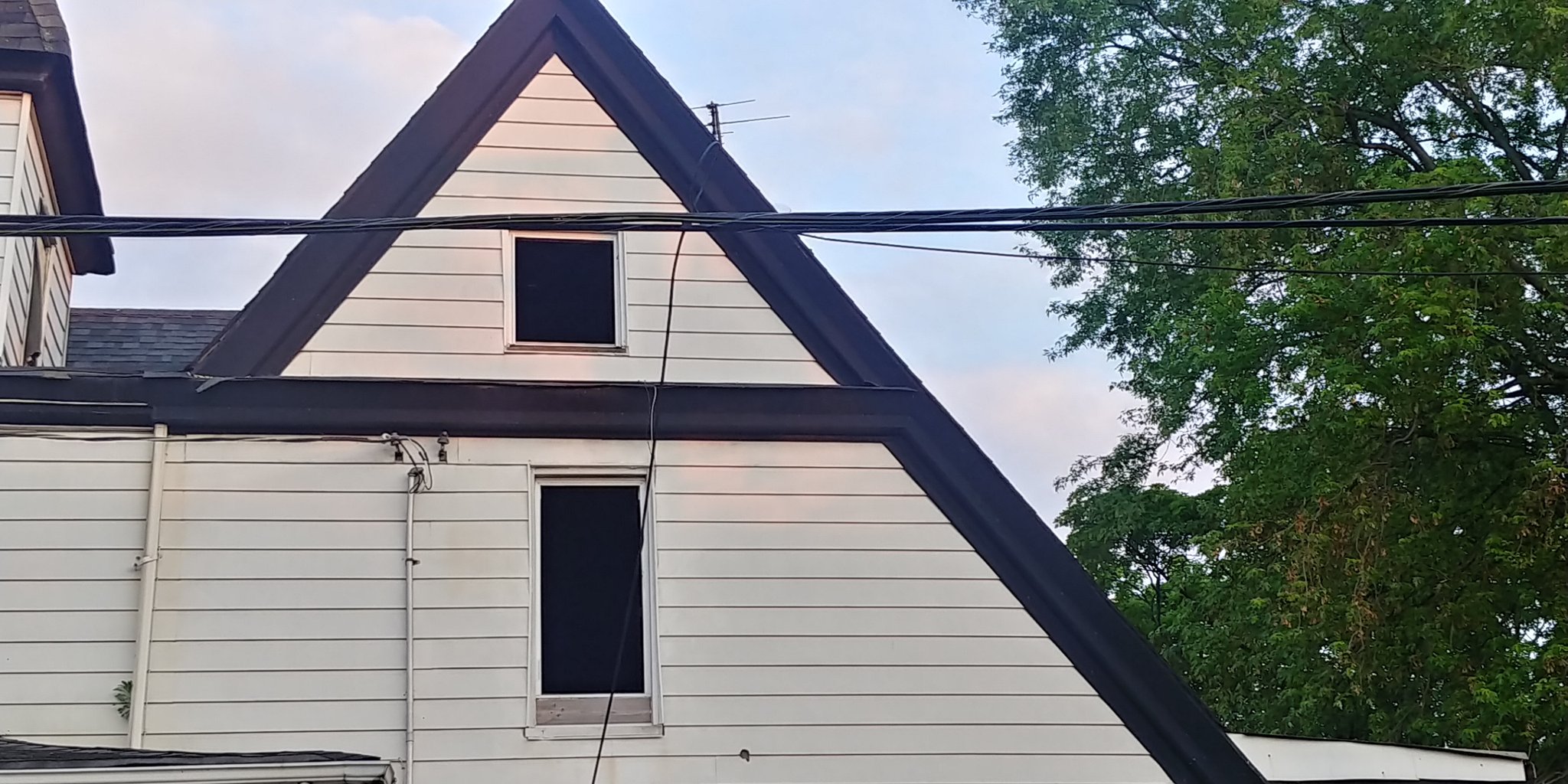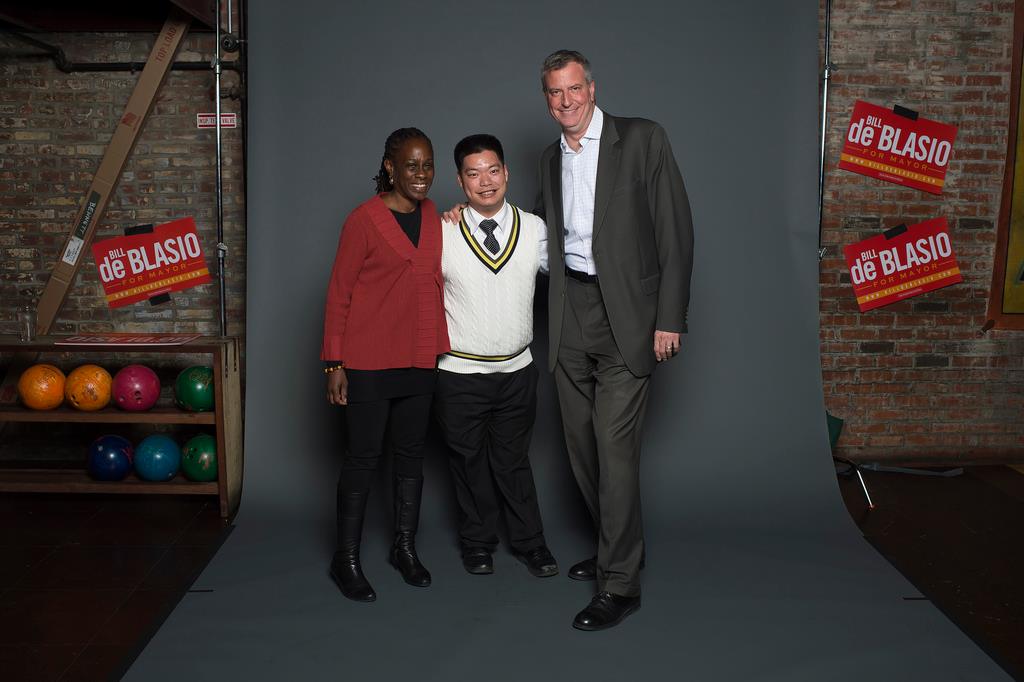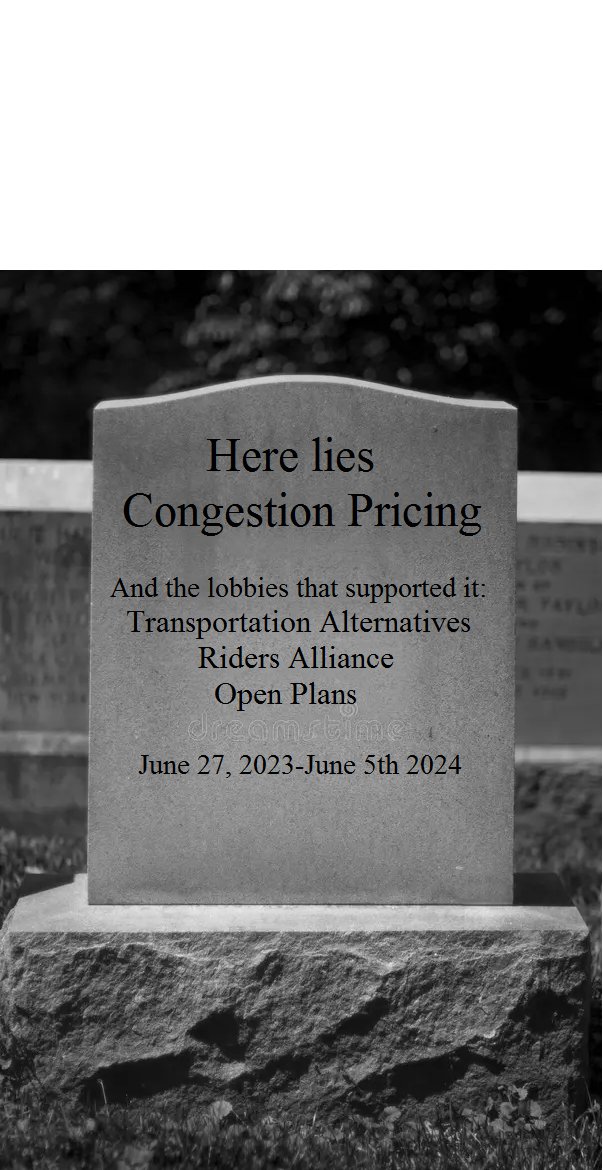
Sunday, June 30, 2024
Friday, June 28, 2024
Zip-e-dee-MTA

Queens straphangers are worried after spotting zip ties along the tracks at an Ozone Park subway station.
What keeps the trains running in the Big Apple?
Queens straphangers are praying it’s not plastic zip ties.
Dozens of zip ties wrapped around one of the tracks at the Rockaway Boulevard A train station in Ozone Park have been raising eyebrows and making some subway riders queasy.
“Should I be worried?” asked nursing student Kayle Persaud. “If I cut one zip tie, does it start to fall?”
The troubling scene, first reported by AM New York, shows a long line of the plastic ties along the middle track at the elevated subway station – which one straphanger noted is “not a good look.”
“The first time I saw it I thought, ‘Hmm… Is it holding the tracks together?'” said subway rider Eliana Rodriguez. “Even the screws look like they’re not all the way in.”
Another subway rider, who only identified himself as Ibrahim M, agreed it was a tad concerning.
“Even if it’s not actually holding the track together, it just looks awful,” he told The Post on Thursday. “They could have cut it off or painted it the same color. I hope it’s not holding the tracks together for all the money we pay to travel on the subway.”
Adding to worries was this week’s MTA announcement that the railroad is halting planned capital projects following Gov. Kathy Hochul’s decision to hold off on the controversial congestion pricing plan.
Thursday, June 27, 2024
MTA Board kills congestion pricing

The MTA’s board voted Wednesday to indefinitely pause the implementation of congestion pricing tolls, formalizing an eleventh-hour postponement announced by Gov. Kathy Hochul earlier this month and officially blowing a $15 billion hole in the authority’s capital budget.
In a 10-to-1 vote, the board at its monthly meeting advanced a resolution that hits the brakes on a long-awaited toll program that would have charged most motorists $15 to enter Manhattan below 60th Street to reduce traffic and raise funds to improve the region’s mass transit. The vote firmly shut the door on the MTA’s board possibly attempting to advance congestion pricing against Hochul’s wishes.
MTA board member David Mack, who voted against the tolling program in March, was the sole vote that sought to block the resolution, instead preferring a permanent halt on the program.
“The fact is the MTA, it’s just a reality, cannot start implementing congestion pricing without the New York State DOT sign off,” said a dour Janno Lieber, the board chair and chief executive of the MTA during the vote. “Others may litigate that very issue, if so, so be it, but we are right now where we are.”
As a result, MTA officials said Wednesday that without a replacement to anticipated toll revenue the authority must defer $16.5 billion worth of construction projects to modernize the region’s aging transit system, including a high-profile extension of the Second Avenue subway to Harlem, signal upgrades and new train cars, among many others. Stop-work orders have already gone out to some projects, sending the region’s contractors into a panic.
Tim Mulligan, the MTA’s deputy chief development officer, said the authority will have to prioritize essential maintenance and upgrades to keep the system functioning and defer less critical, but long sought, accessibility, expansion and modernization work.
“Our guiding principles for the last 21 days, as we've been going through this process, has been to maintain the safe and functional operation of the system,” said Mulligan as he detailed likely changes to the MTA’s capital program.
“There are things that make the system better for our customers and for operation,” Mulligan added, “but they aren't directly related to maintaining existing service in all cases, and so more deferrals [will happen] to projects that are from those categories."
Ashes to ashes, dust to dust
Tuesday, June 25, 2024
NYC Planning wants a little more upzoning on Sutphin
The Department of City Planning provided residents an online refresher course about zoning ahead of a Zoom town hall about proposed reforms of Downtown Jamaica and parts of Hollis, last Thursday.
During the Jamaica Neighborhood Plan Town Hall, people had questions about what will be developed in the area and if its needs will be met with the plan.
DCP agency reps said they hope to get more feedback from community members regarding the rezoning. The initiative would transform Jamaica Center, the downtown area where straphangers catch the E, J and Z trains, along with nearby regions stretching to the Jamaica and Hollis Long Island Rail Road stops to Hillside Avenue in the north and the Van Wyck Expressway to the west. Last Thursday’s event was designed to lay the groundwork for an environmental review of the plan. The proposal also calls for rezoning sections of Dunkirk and 160th streets and Merrick, Sutphin and Guy R. Brewer boulevards, according to DCP. There will be no zoning changes to single- or two-family areas, said Shavvone Jackson, a DCP representative.
More than 200,000 people who live, work or go to school in and around Downtown Jamaica would be impacted by the rezoning of the area, said DCP Borough Planner Alisa Nurmansyah, using data from the 2020 Census.
“Zoning is a set of rules that control how land in a community can be used,” said Jasmin Tepale, the senior program manager at DCP, who is overseeing the Jamaica rezoning plan. “It tells us what you can build and where you can build it ... this includes the type of uses you see in a neighborhood like residential or commercial zoning ... and what a building looks like and how tall it can be.”
The three main types of zoning districts include residential, commercial and manufacturing, or R, C and M zoning districts. R1 is a low-density residential district, while R10 is a high-density district.
The purpose of the rezoning plan is to build up Downtown Jamaica, which consists of mostly two- to six-story homes and residential, commercial and manufacturing buildings to create eight- to 16-story buildings to address the growing population and low housing production in the area, according to the DCP presentation.
Data from the American Community Survey, released in 2022, said that from 2010 to 2020, Jamaica’s population increased by 13.4 percent, higher than the rest of the city, which grew by 7.7 percent. Housing production in the area increased by 10.1 percent while housing production in the city grew by 7.3 percent, which is closer to the citywide population increase, according to DCP.
Profiles of Queens Community District 12 (Jamaica, Hollis and St. Albans) said the population was approximately 225,900 in 2010 and 248,158 in 2022.
U.S. Census data said that the city’s population was 8,804,190 on April 1, 2020. A World Population Review census said the city’s population decreased to 7,931,147, but is expected to be around 9 million by 2040, according to a Fox News report on March 28.
Blossom Ferguson, one resident who was on the Zoom call, asked if any of the housing will be available to people with low incomes.
A city Housing Preservation & Development spokeswoman said that if an area is mapped for mandatory inclusionary housing, its required that a share of new housing will be permanently affordable. If a developer comes in to erect a building with more than 10 units, a percentage of them must be permanently affordable.
“Do you plan on having condos or co-ops?” Ferguson asked. “Is that already established or still in the works?”
Tepale said that based on previous feedback, many seniors who would like to leave their single-family home have expressed interest in still owning property, and condos and co-ops are something that can be created in residential zones, along with other housing types.
Lisa Edwards, another resident, said that she believes the whole rezoning plan is simply gentrification and that the whole process for the initiative is undemocratic.
“This has not been properly publicized,” Edwards said. “It does not allow for community members to hear each other’s voices and discuss.”
Jackson, who spoke during the zoning refresher, said there are 38 people on the steering committee, 26 meetings were held and that DCP has reached out to more than 2,000 people since May 2023.
“We are going to continue to create opportunities for people to engage in this process,” Jackson said.
The rent is too damn higher
In a vote affecting the roughly million New York households in rent-stabilized apartments, the New York City Rent Guidelines Board voted Monday night to allow rent increases of 2.75 percent for one-year leases and 5.25 percent for two-year leases beginning Oct. 1.
The 5-4 vote capped a contentious voting session, part of an annual process in which the city board weighs landlord and tenant economics in setting permitted rent hikes.
A crowded tenant group on the Park Avenue sidewalk outside Hunter College calling for a rent freeze preceded the vote inside. Eleven demonstrators were arrested after police ordered them to step away from the entrance.
The final decision comes after a volatile few months of meetings, including a preliminary vote April 30 during which two tenant members of the board walked out in protest. In that earlier meeting, the board decided on a potential range of rent adjustments of between 2 and 4.5 percent for a one-year lease and 4 to 6.5 percent for two-year leases.
Public Advocate Jumaane Williams, a former tenant organizer, spoke at the protest, calling on the board to decide on the “lowest rent increase humanly possible.”
“Raising rents on tenants does not help landlords that are suffering,” Williams said to the crowd. “You can’t raise rent on people that do not have it.”
Landlords and their representatives assert larger increases are necessary to help them maintain buildings and afford taxes.
“Rent is income that buildings need to meet escalating costs, and we are hoping for an upward adjustment that recognizes the need to maintain buildings that are at and approaching 100 years old,” Michael Tobman of the Rent Stabilization Association told THE CITY.
According to an annual report the Rent Guidelines Board produces on building operating costs, buildings that contain rent stabilized apartments had expenses projected to increase 3.9 percent this year. Meanwhile, tenant advocates generally argue that raising rent to make up for operating expenses will only result in more evictions and homelessness.
“There are small landlords that are dealing with issues and need assistance,” Williams told THE CITY. “But we need the landlords to get help from the state and the city, and not from tenants who can’t afford it.”
Wednesday, June 19, 2024
No No No
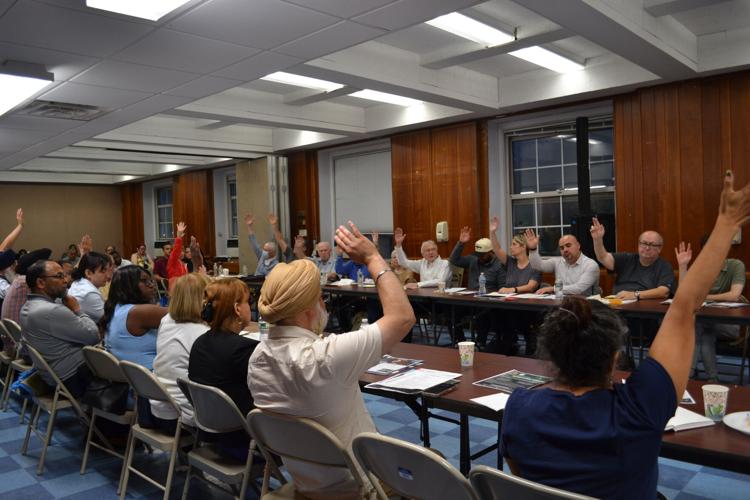
Apples to oranges.
That is what one Community Board 13 resident called Mayor Adams’ City of Yes housing proposal versus the possible reality of the actual plan, which promises a “little bit more housing in every neighborhood,” before the board’s Land Use Committee unanimously voted no on the scheme on Monday.
The purpose of the initiative is to create 100,000 units of housing citywide for 250,000 people by allowing new apartment complexes on properties such as church parking lots and the reconstruction of office buildings, garden apartments, commercial buildings and accessory dwelling units in both commercial and residential areas to make them affordable in the future. Residents at the meeting pointed out that there is no actual language in the mayor’s plan that guarantees low-cost homes for those who need it most.
“I’m looking at the numbers associated with increasing the housing stock and reducing homelessness,” Jax Dolly, a CB 13 resident, said during the meeting, held online.
“I’m seeing that 17 percent of the population make $20,000 and below — this is in New York City — and 45 percent make $50,000 and below. When you look at the average rent across the boroughs, it ranges from $3,000 to $5,000 in average rent.”
Dolly went on to say that if 3.9 million, or 45 percent of people in the Big Apple, can’t afford to live in the city, how will upending zoning laws to house 250,000 people address the housing crisis in 15 years?
“It makes no sense,” she said. “It feels like three-card Monte here. You are going to essentially be handing a gift to developers to come and do a land grab where they can build all of these new units, but they don’t have to offer below market rate to anyone or if they initially do they can eventually put it at market rate or above at some point. So how is this going to address the housing crisis long-term?”
Scott Solomon from the Department of City Planning said it’s understandable to have healthy skepticism about 100,000 units putting a dent in the housing crisis, but there is a lack of homes, and the hope is that with more housing stock, prices would go down.
Jackie Wilson, a CB 13 member, said she does not see the benefit of the plan for people who live in Queens or within the board’s area.
“You’re going to pile a bunch of people [together], you’re going to pile on a bunch of traffic and there’s going to be fewer resources,” Wilson said. “What’s the benefit for us?
“What’s the benefit to homeowners here?”
The idea is that housing would be more affordable because there will be more options and there can’t be more housing options without more housing production, said Solomon.
“The goal is, primarily, to facilitate incremental housing growth so that housing prices can stabilize,” Solomon said.
Wilson said that people in residential areas in Eastern Queens already have homes, so why should the character of their neighborhoods change to benefit others while her neighbors potentially lose parking spots due to the housing development mandate making parking optional wherever any new housing is created?
“There are thousands of people who do live here who are leaving often,” Solomon said. “They are leaving the city because they can’t afford it so they sell their home because they can’t afford living here anymore, or they live in the area, don’t own a home, they want to buy a home, they leave the area, the city, the region, the state.”
Community Board 9 voted against City of Yes for Housing Opportunity at its monthly meeting Tuesday.
Prior to the vote, during the public forum, residents expressed opposition to the mayor’s sweeping proposal to update zoning laws, citing overdevelopment concerns, quality of life and overcrowded schools. The opinions echoed those of many at a Zoom meeting held a few weeks prior, where residents living in Community District 9 largely spoke against the proposal.
The group’s Land Use and Housing Committee, led by members Sylvia Hack and Andrew Taranto, introduced a resolution against the zoning text amendment.
When the resolution was brought before the board, almost all in attendance voted in favor of the decision to not support the proposal. There were only two abstentions and no dissent.
Residents of Community District 10 largely do not support City of Yes for Housing Opportunity — and they’re making it clear to their community board.
At Board 10’s meeting last week, the community turned out to make its opposition heard, alongside written notice of residents’ opinions.
The Howard Beach Lindenwood Civic, led by Phyllis Inserillo and Barbara McNamara, had spread the word for weeks about the board’s June 6 meeting, where the Department of City Planning presented the mayor’s zoning text amendment that aims to loosen restrictions and address the housing crisis.
The proposal includes removing parking mandates, legalizing accessory dwelling units and more housing above businesses, adding transit-oriented development and a new Universal Affordability Preference, which would allow developers to add at least 20 percent more housing to buildings if the additional homes are affordable to households earning 60 percent of the area median income.
After the board voted “yes” with conditions to the economic portion of the City of Yes proposal, which passed the City Council last week, Inserillo, who is also the chief of staff for Councilwoman Joann Ariola (R-Ozone Park) but recused herself from her duties for the meeting, cautioned against a similar type of vote.
She said she had not spoken to a single person within the confines of Board 10 that supported the text amendment. She also said that at a City Council Land Use Committee meeting in April, the chair of the DCP, Dan Garodnick, said a vote of yes from the community board with conditions is still a yes — even if those conditions are not met.
“You did that the last time in the economic portion but you cannot do that again,” Inserillo said. “Our community does not even want a ‘no’ vote with conditions. This plan will be a disaster for this community and the only vote we want to hear from this board is ‘no.’”
“We say no,” said McNamara during the public forum. “We live here because we want our suburban feeling while being close enough to go into the city to enjoy our theaters, museums, restaurants, etcetera. We do not want ADUs or basement dwellers or housing above our stores on Crossbay Boulevard or many apartment buildings in old Howard.”
Both Inserillo and McNamara received loud applause from the crowd following their words.
Other residents spoke on concerns that the new zoning would leave schools overcrowded and put too much pressure on the neighborhood’s firehouse on Cross Bay Boulevard, which would have more units to tend to.
The civic later posted a photo of the meeting turnout on social media, writing, “Howard Beach is saying NO to the City of Yes at the Community Board 10 meeting. We have a packed house with standing room only and there isn’t much more room to stand.
“Together, we have collected over 2,500 signatures on letters opposing the City of Yes and we will continue to collect up until the vote. Thank you to everyone who has signed and a huge thank to all those who have collected letters. Our voices are being heard loud and clear.”
Rescue delay 911
Ending the Sanctuary City lies
 |
| Migrant hotel shelter by Penn Station-Photo by JQ LLC |
New York City voters in November could have the power to repeal “misguided and dangerous” “sanctuary city” laws that severely limit the NYPD’s ability to cooperate with the feds on immigration matters and are a clear “threat to public safety.”
Joe Borelli (R-Staten Island), Robert Holden (D-Queens) and six other members of the City Council’s “Common Sense Caucus” fired off a letter this week to a newly-appointed Charter Revision Commission, asking it to put a referendum question on the ballot to determine whether to roll back the “sanctuary” laws that help criminals avoid deportation.
“We are writing to urge the Charter Revision Commission to advance a ballot initiative asking voters if New York City should repeal recent so-called ‘sanctuary city’ laws that prohibit members of law enforcement and other agencies from cooperating with federal authorities to help detain or remove unauthorized, non-citizens who have committed crimes in our city,” says the letter dated Tuesday.
“We feel these laws, as currently construed, are not only misguided and dangerous, they have strayed far from their original purpose of fostering public safety. Ultimately it should be put to voters to decide who is right.”
Earlier this month, Holden and Borelli drafted legislation to repeal the sanctuary laws — but they realize it’s a pipe dream to think the Council’s left-wing majority would pass it.
So they’re hoping for better luck with the commission, which was appointed by Mayor Eric Adams, a retired NYPD cop and moderate Dem who has said the current rules are too soft on crime.
Some Common Sense Caucus members expect to pitch the referendum plan in person during a future public hearing hosted by the commission. Both Holden and Borelli said they believe voters would back their proposed ballot initiative.
Woman beats down child rapist wanted by NYPD

A sweeping manhunt in New York City ended on Tuesday after 23-year-old Angela Sauretti recognized a man in a black hoodie who entered the 108th Street Grocery in Queens at 1 a.m.
Sauretti was all but certain this was the face she had seen on Instagram—in an NYPD wanted poster for a man suspected in the machete-point rape of a 13-year-old girl as she walked with a boy her age last week.
Sauretti called out to a friend who stood nearby who had also seen the police Instagram posting. She asked if this was indeed the man more than 60 detectives had been seeking since Thursday’s broad daylight attack in a park across from the victim’s junior high school.
“I pointed him out,” Sauretti told The Daily Beast. “I’m like, ‘Yo, that’s him?’ [The friend] said, ‘Yes, that’s him.’ That’s what confirmed it. And everything just spiraled from there.”
Sauretti grabbed the man in the hoodie.
“He tried to run, so I put him in a headlock,” she told The Daily Beast.
He continued to struggle and she took an opportunity to administer her own brand of street justice
“He got something that his mother should have done to him,” she said. “I’ll put it that way.”
She added, “As a woman, I had to really set the tone and remind him, ‘It wasn’t a man that did this to you. It was a woman.’”
He kept resisting, allowing her to further impart a particular lesson.
“You did that to a woman, and a woman got back and did this to you.” she said. “So it had him contemplating, ‘Maybe I won’t mess with the next woman.’ Because you never know. There’s nice ones and there's ones that will really defend themselves and go all out.”
The man protested.
“He said, ‘Let me explain!’ I’m like, ‘There’s nothing to explain. You’re a rapist,’” she recalled. “He said, ‘I don’t care.’ I’m like, ‘What do you mean you don’t care? You’re a rapist.’ He said, ‘I don't care.’”
Tuesday, June 18, 2024
Motorcycle mayhem terrorizes residents at the 34th ave open streets in Jackson Heights
Not much has been written about what a disaster these open streets have turned into and it's easy to see why. Council member Shekar Krishnan held a sham town hall about this and it mostly was about preserving the open streets than stopping the "traffic violence" that goes on there every day and night.
The Department of Transportation Alternatives is holding a survey for these dangerous open streets tonight in the hopes they will get 88 million dollars to turn those 25 blocks into an official fake park.
Hey Queens! Take our survey to help inform the future capital project vision of the 34th Ave Open Street: https://t.co/syQg96QBGu (closes Friday 6/21) and join us for a design workshop:
— NYC DOT (@NYC_DOT) June 17, 2024
When: Tomorrow June 18, 5-7PM
Where: 34th Ave between 79th St and 80th St pic.twitter.com/QOqlZIV1lH
Monday, June 17, 2024
Expressway Haunted Mansion
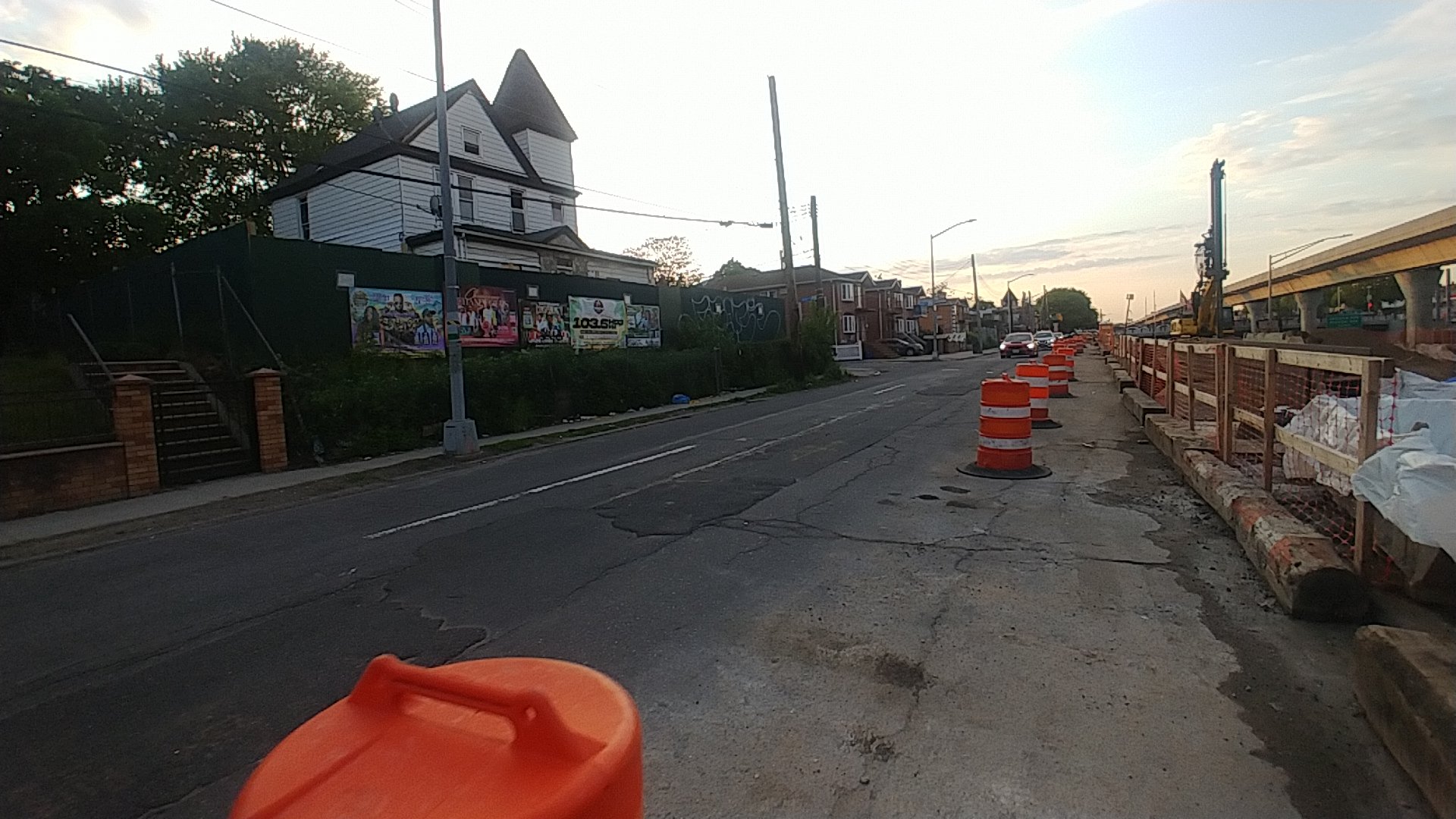
Riding along the Van Wyck Expressway while it's still under construction, I did a double take and saw this huge house on the corner of 105th ave.
Parking is forbidden by the entrance but it hasn't discourage this ricer car owner. Although it looks like this house had a steady occupation by squatters for some time.
A full dumpster indicates gut renovations.
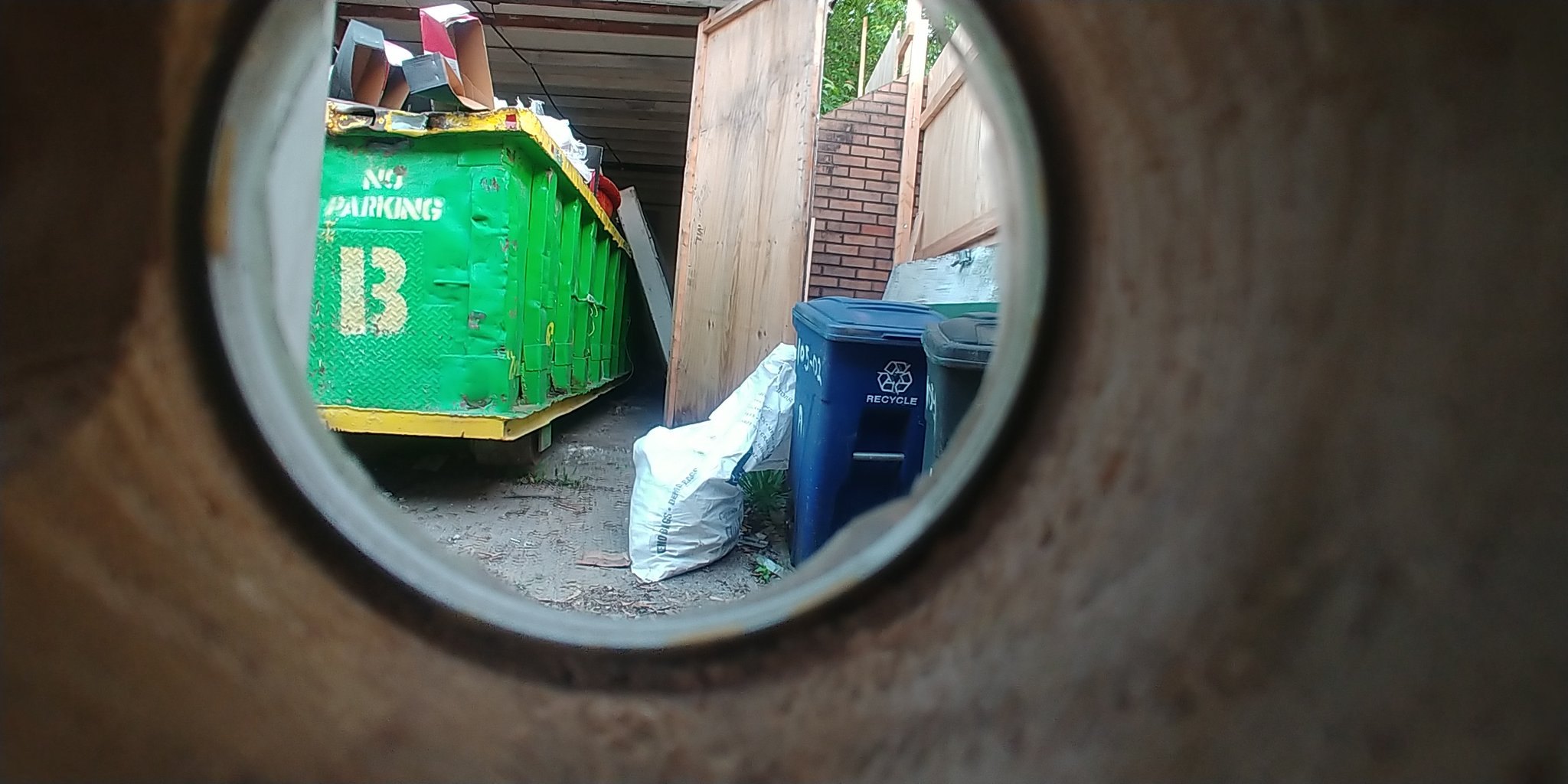
Like every other abandoned house or vacant lot, the plywood fence is covered with numerous posters of festivals coming to town.
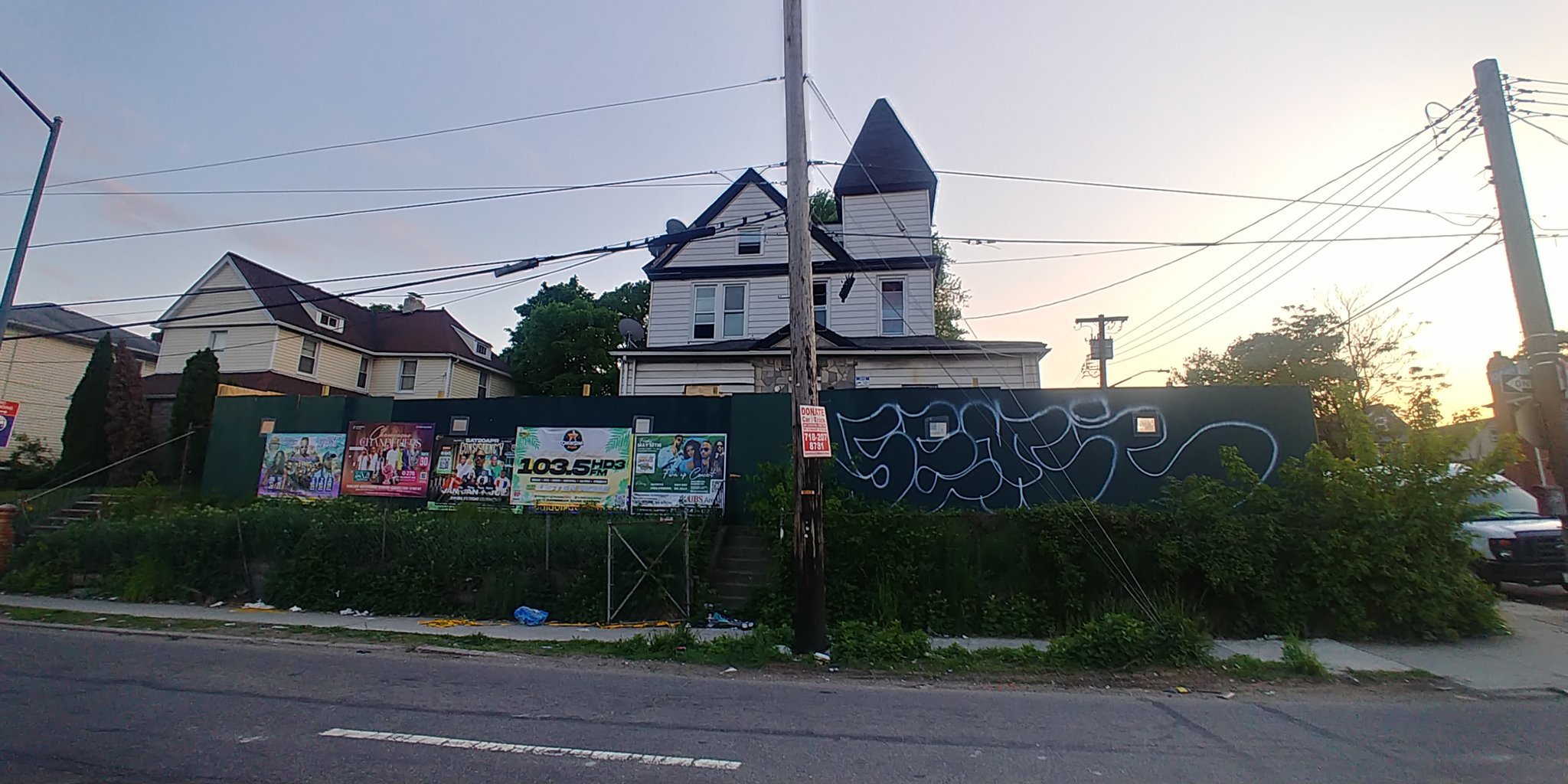
It kinda looks like the Bates Motel.
Mother?
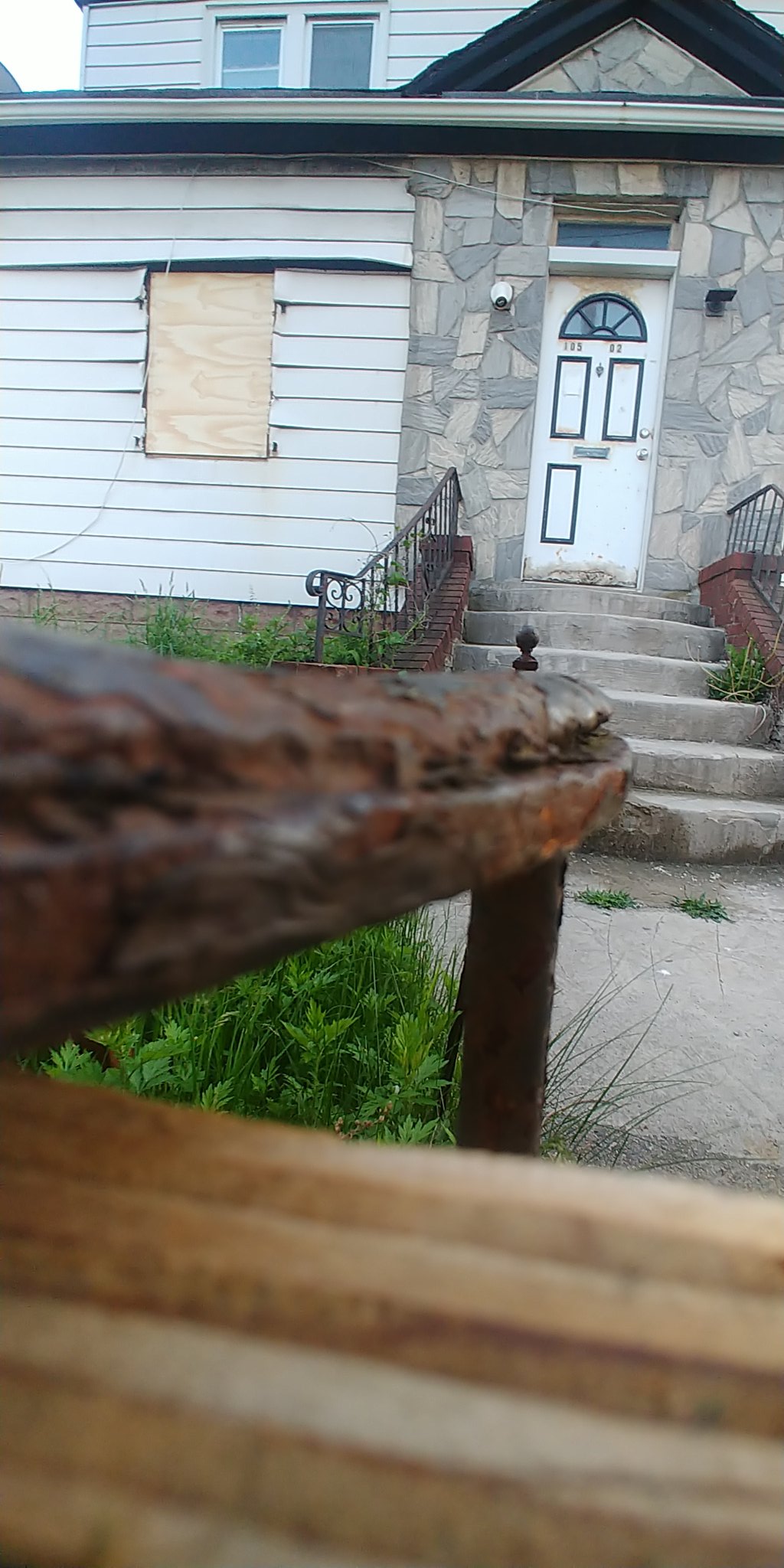
Looked up the address on the Buildings Dept. website and there isn't much information about who is renovating this house. But it did have a record of multiple families living in this quasi-mansion from 30 years ago, which surely still continued considering the number of satellite dishes. But with the City Of Yes coming, the owner of this house can get away with building a little more housing for another 10 families and a dozen single men delivering food on motorcycles.
Saturday, June 15, 2024
Frank Lloyd Crap special in Southside Queens
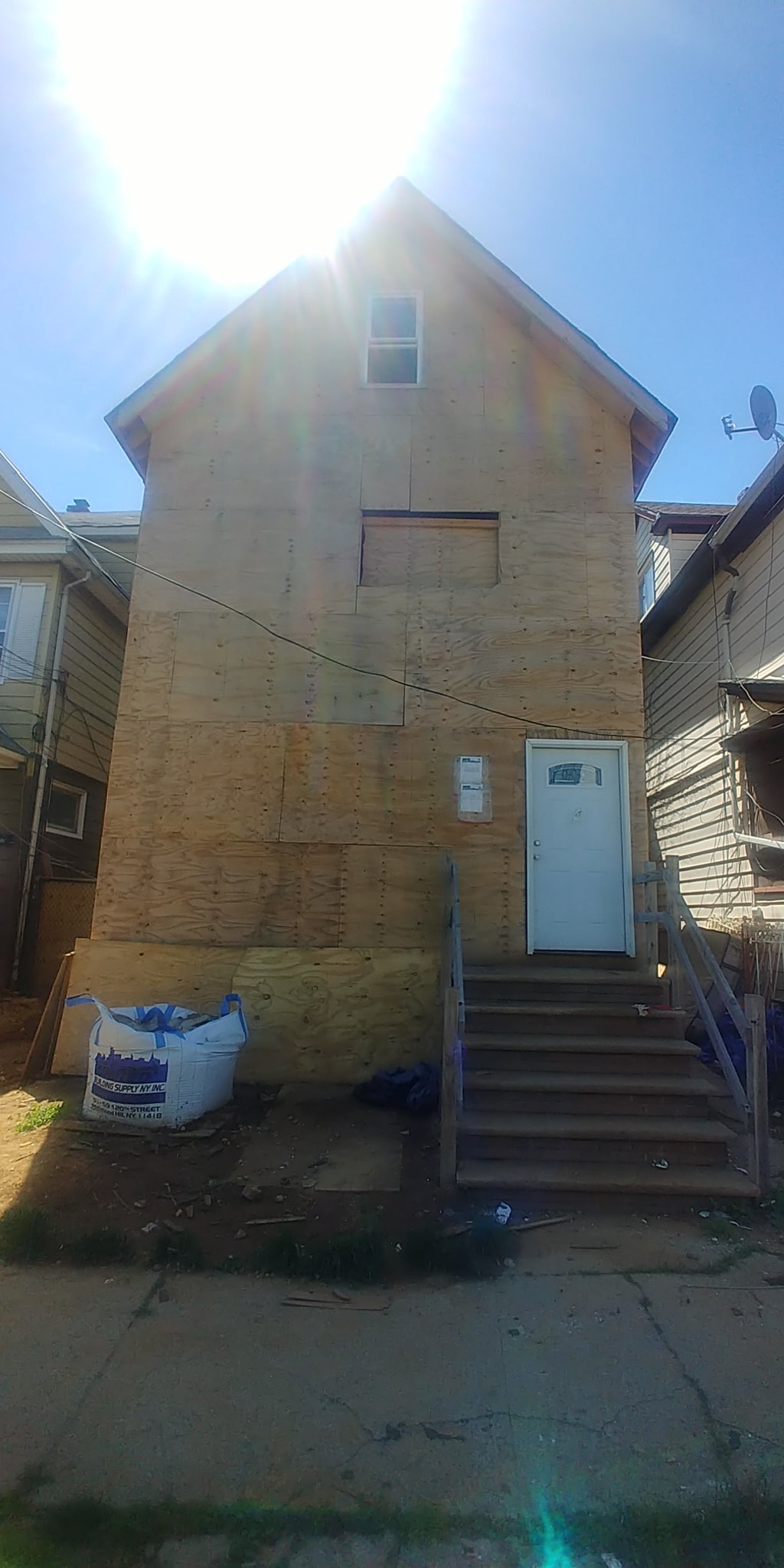
This house got some facelift. It looks they made a few extra rooms.

This reminds me of the second little piggy house.
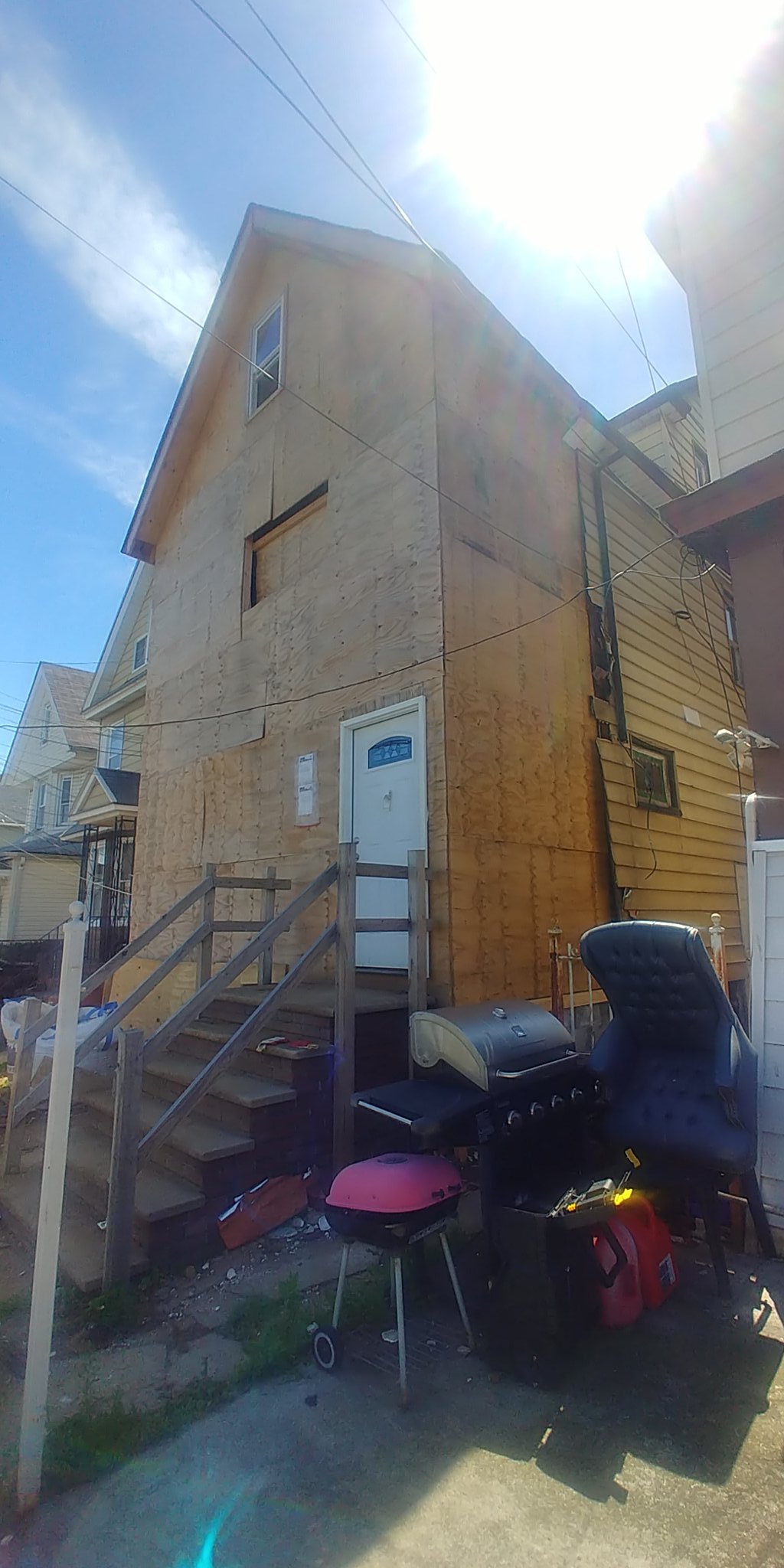
Maybe the extra space is store these grills?

One side has shingles, the other side has brick paneling.
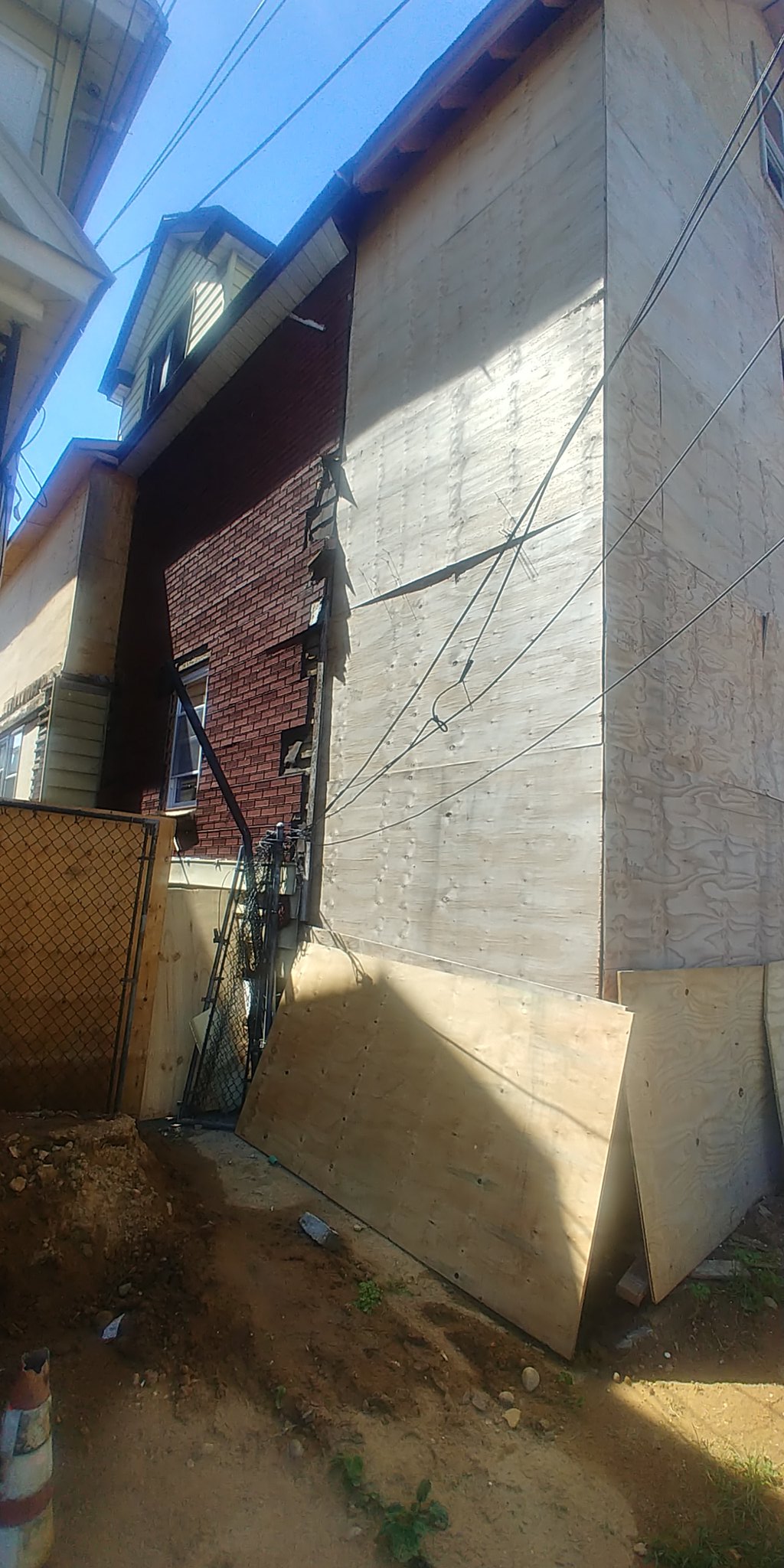
Maybe this is the little mo' housing from the City Of Yes doctrine.
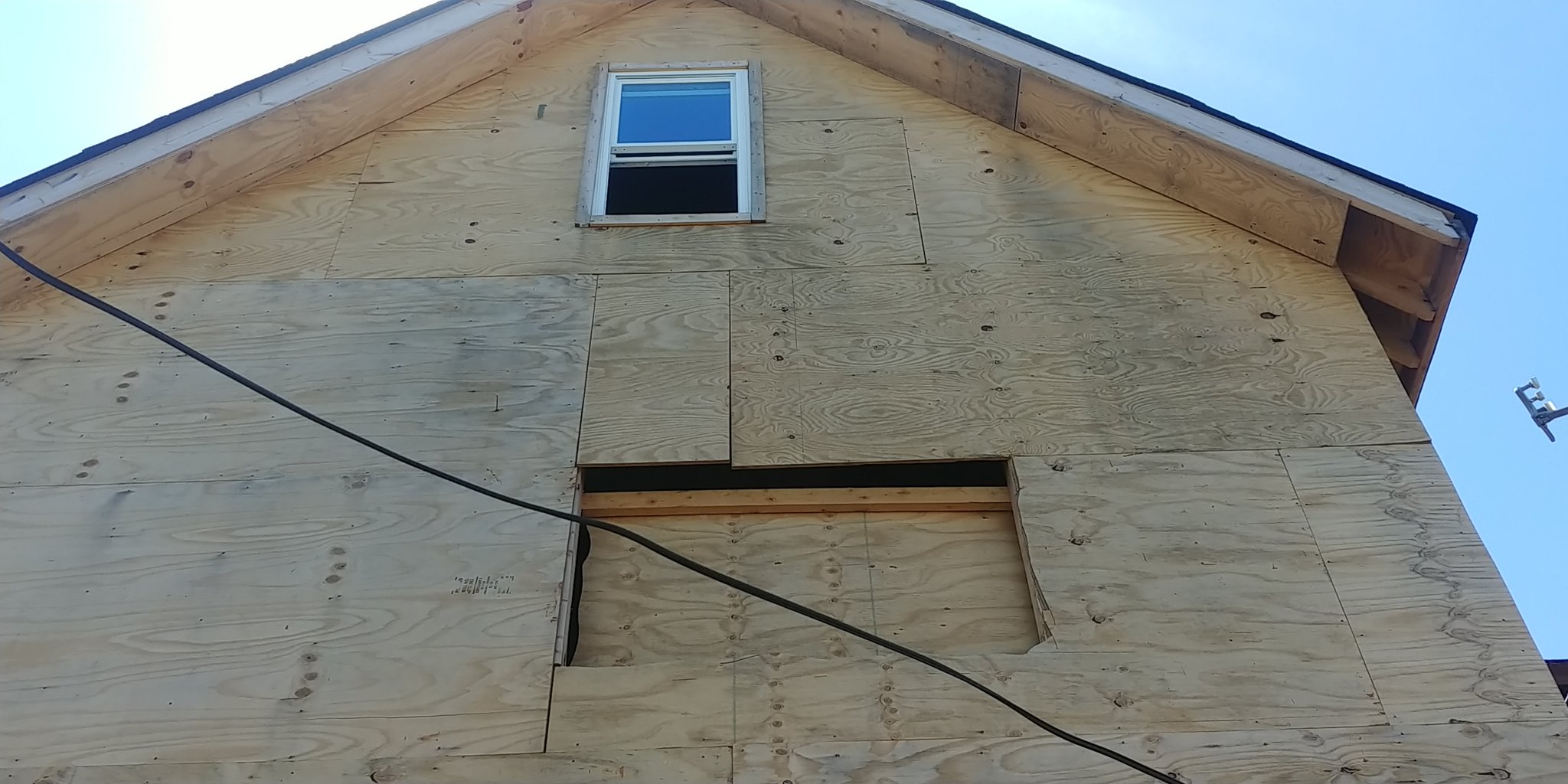
Saturation pricing now

New York City officials signed off on an 8.5% water bill hike for property owners on Thursday — the largest increase since 2011.
The city Water Board begrudgingly approved the new rates during a meeting where the group also passed a resolution saying they were forced to approve such a steep hike due to a budget maneuver by Mayor Eric Adams.
The members said Adams imposed new fees on the Water Board, an independent agency that oversees the city’s water supply. The resolution said the increase will make it more difficult to justify water bill hikes in the future, which could limit board's ability to fund infrastructure to handle increasing rainfall and rising sea levels caused by climate change.
“It undermines the board's ability to consider rates in the future for critical water infrastructure, like storm water resilience and coastal resilience,” board member Dan Zarrilli said in an interview after the vote.
The increase will add $93 to the average city property owner's water bill, from $1,088 to $1,181. The new rates go into effect July 1.
Thursday, June 13, 2024
More little housing

The average size of apartments in Queens was the smallest among all New York City boroughs in 2023, as well as the third-smallest among cities in the United States, according to a report by the real estate firm RentCafe.
At 692 square feet, Queens boasts slightly smaller apartments on average than Brooklyn’s 712 square feet. Among major U.S. cities, only Seattle and Portland have smaller averages, at 661 and 685 square feet respectively.
Compared to the historical average square footage of rentals in Queens, the borough had a decrease of 32 square feet over the last ten years, marking a 4.4% decline. Over the same period of time, Brooklyn had a 21 square feet decrease for a 2.9% decline.
In addition to Queens and Brooklyn, which placed third and fourth among the smallest average apartment sizes in the country, a third New York City borough, Manhattan, was found within the top ten, placing sixth at 737 square feet. However, unlike Queens and Brooklyn, Manhattan actually increased in square footage over the last decade. Apartments there grew 2.2% in the last ten years, adding 16 square feet to the average size of apartments there.
Wednesday, June 12, 2024
NYC Planning to hold a town hall on zoom for the Jamaica Neighboorhood Action Plan (but don't call it the City Of Yes)
📢 Attention Southeast Queens residents!
— Adrienne Adams (@NYCSpeakerAdams) June 10, 2024
This is your chance to chime in on what should be included in the long-term vision to improve the downtown Jamaica area.
Join us at the Jamaica Neighborhood Plan Town Hall on Thursday, June 13th at 7PM!
RSVP: https://t.co/48u7DF7HhD pic.twitter.com/YtODxTbWI8
Why wouldn't Natasha Williams and Dan Garodnick and all those urbanist plants from the NYC Planning office hold an in person town hall now that the weather is a lot warmer out. Maybe it's because everyone in Jamaica knows this is part of the notorious City Of Yes plan to rezone and upzone residential blocks and make driving and parking difficult for them. Here's another thing, the toxic lobbyist Cerebrus who supported the failed congestion pricing scheme-transportation alternatives, open plans and Open New York have heavily influenced the Jamaica Plan from the very beginning. This zoom town hall is going to be rigged with those lobbyist creeps and their cult supporters unless the people from Southeast Queens stops them.
Bill de Blasio DEP office staffer currently working under Mayor Adams indicted for bank fraud
A Forest Hills man was arrested by FBI agents on Thursday morning for participating in a multi-million dollar bank fraud scheme while he was a high-ranking official in the administration of former Mayor Bill de Blasio.
Tommy Lin, 41, was charged in a superseding indictment along with two co-defendants for defrauding financial institutions which resulted in the theft of over $10 million while serving as the Director of Constituent Services in the Community Affairs Unit.
Beginning in 2018, Lin participated in a scheme with his co-defendants Zhong Shi Gao and Fei Jiang, and others to steal millions of dollars by causing transfers of funds between accounts they controlled, then falsely and fraudulently reporting that the transfers were unauthorized, which induced the financial institutions to credit them the amount of the transfers, according to the indictment. The scheme was responsible for over $10 million in actual losses to nearly a dozen banks.
“Tommy Lin allegedly participated in a complex bank fraud scheme while also serving as a Director in the New York City Mayor’s Office and Senior Advisor to the NYPD’s Asian Advisory Council,” U.S. Attorney Damian Williams said. “Leveraging his connections to law enforcement, he allegedly leaked personal identifying information to members of the scheme, ran background checks for them and even arranged for federal immigration authorities to arrest an individual in exchange for $20,000 in cash.”
Lin allegedly accepted that $20,000 bribe in cash in exchange for arranging for a Deportation Officer with Immigration and Customs Enforcement (ICE) to arrest a disgruntled accountholder who had previously participated in the scheme, according to the indictment.
“To facilitate this conspiracy, Lin allegedly assisted members of the scheme in running background checks and accepted a significant cash bribe to arrange the arrest of a slighted account holder by immigration authorities,” FBI Assistant Director-in-Charge James Smith said. “Those in municipal offices are expected to conduct themselves with rectitude and obedience to the law, not engage in the purposeful manipulation of our economic infrastructure.”
Lin is charged with one count of bank fraud conspiracy, which carries a maximum sentence of 30 years in prison; one count of conspiracy to commit wire fraud affecting a financial institution, which carries a maximum sentence of 30 years in prison; and one count of aggravated identity theft which carries a mandatory sentence of two years in prison to be served consecutively to any other sentence imposed.
Thursday, June 6, 2024
Congestion pricing is dead
The Village Sun
Bowing to political pressure and in the face of numerous lawsuits, Governor Hochul on Wednesday declared that the Manhattan congestion pricing plan is on an “indefinite pause.”
“After careful consideration I have come to the difficult decision that implementing the planned congestion pricing system risks too many unintended consequences,” Hochul said. “I have directed the M.T.A. to indefinitely pause the program.”
The Metropolitan Transportation’s traffic-tolling plan was set to start later this month on June 30. It would have walloped car drivers with a $15 once-a-day fee for driving into Manhattan south of 60th Street ($3.75 during off-peak hours) — and trucks with repeated fees of $24 to $36 for each time they entered the zone.
However, the scheme faced eight lawsuits, with plaintiffs ranging from New Jersey, to the teachers union to Chinatown merchants and Lower East Side residents, all of whom said the plan’s financial impact would be unfair and onerous. Among the top arguments was that a comprehensive environmental impact statement, or E.I.S., for the sweeping, first-in-the-nation plan was shockingly never done.
Retired judge and former Councilmember Kathryn Freed, who lives on the Lower East Side and is a plaintiff on a class-action lawsuit against congestion pricing, has become a sort of poster person for the opposition. Yet, she described her reaction to the plan’s shelving as “mixed.”
“I’m not one of the people who’s crazy pro-car or whatever,” she said. “The whole thing is a mess. I don’t know what Hochul was waiting for — it was massively unpopular.”
Indeed, according to a recent Siena College survey, 63 percent of New Yorkers statewide and 64 percent of Big Apple residents oppose the Manhattan congestion pricing plan, with opposition in the suburbs even higher at 72 percent. Fourteen percent said they would not come to Manhattan as often due to the toll.
At the urging of then-Governor Cuomo, the state Legislature passed congestion pricing into law five years ago, with the target of raising a total of $15 billion — at a clip of $1 billion per year — for the constantly cash-poor transit agency.
Monday, June 3, 2024
Saturday, June 1, 2024
Assemblywoman advocate for safe streets is a traffic violence recidivist
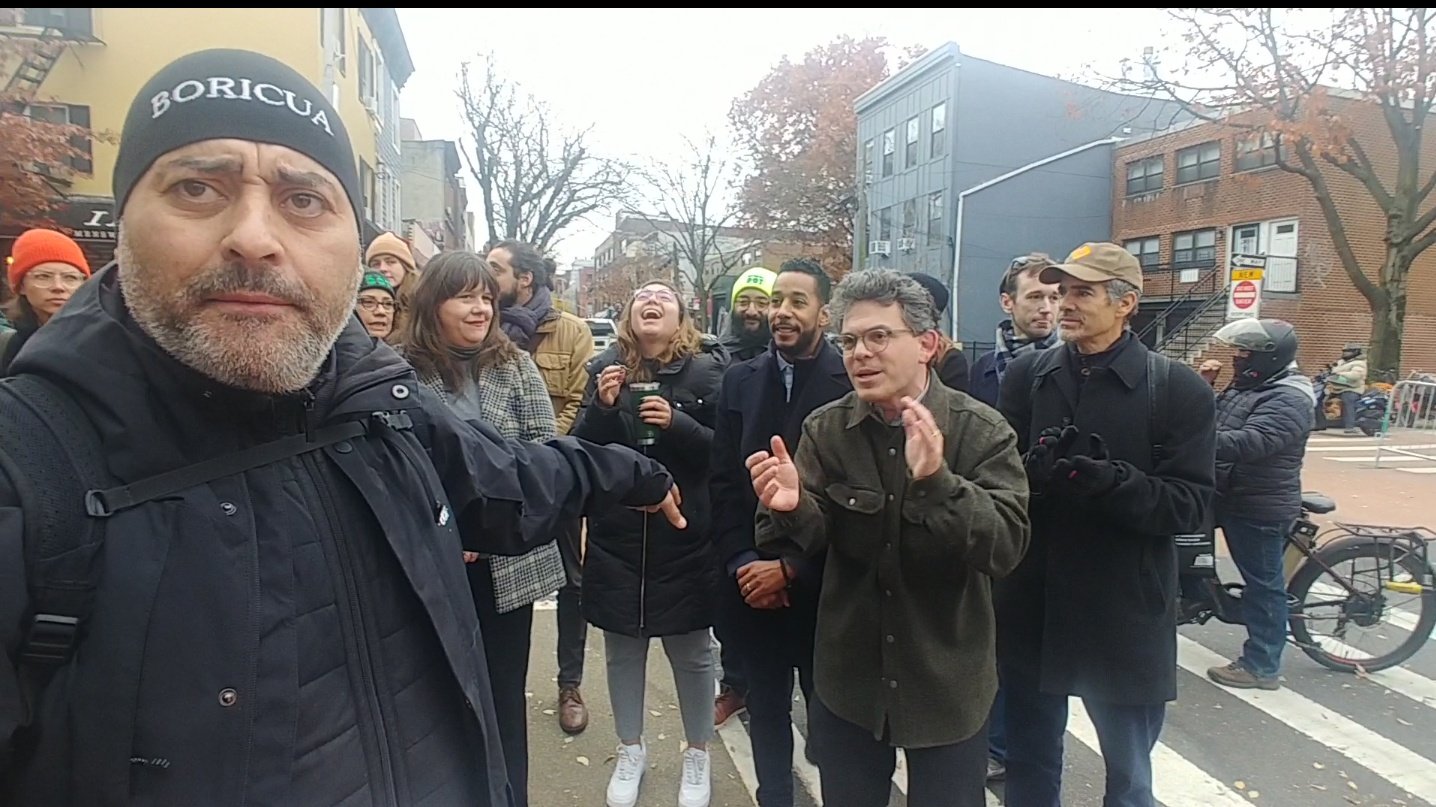 |
| Emily is the smirking fauxgressive on the left. Photo by JQ LLC |
Assemblywoman Emily Gallagher (D-Brooklyn) — who has demonized drivers for years as she calls for “safer streets” — has racked up at least 46 traffic tickets totaling over $4,000 over the past two-and-a-half years, a review of public records by The Post found.
The socialist pol’s 2014 White Buick Encore was caught on camera blowing through a red light in the Bronx in November 2022, and ticketed for parking in front of fire hydrants at least six times, according to city records.
Her utter disregard for the rules of the road extends beyond the Big Apple: In March 2022, Albany traffic cops slapped the far-left lawmaker with an expired-meter ticket that she has yet to pay, records show.
Gallagher has been upfront about her war on cars, and called driving a “very kind of aggressive activity” in a 2022 interview.
The scofflaw lawmaker backed a bill known as “Sammy’s Law,” which allows the city to lower speed limits to as low as 10 mph on some streets.



